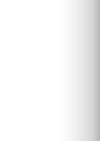1- M.Sc. Graduate, Department of Environment, Faculty of Natural Resources & Marine Sciences (FNRMS), Tarbiat Modares University (T.M.U.), Noor, Iran.
2- Assistant Professor, Department of Environment, Faculty of Natural Resources & Marine Sciences (FNRMS), Tarbiat Modares University (T.M.U.), Noor, Iran. , gholamalifard@gmail.com
3- Assistant Professor, Department of Fisheries, Faculty of Natural Resources & Marine Sciences (FNRMS),Tarbiat Modares University, Noor, Mazandaran, Iran.
Abstract: (2039 Views)
Introduction: Fish consumption is increasing due to the global population growth. Therefore, taking advantage of new methods such as marine aquaculture can be a reliable source for the production of fish in the world. The purpose of this study is the spatial analysis of marine aquaculture farms in the coasts of Mazandaran province.
Materials and methods: In this study, three categories of criteria (water quality, economic-social and physical-environmental) were considered for spatial analysis of aquaculture farms in the coasts of Mazandaran, which are based on the Geographic Information System (GIS) and hierarchical analysis process (AHP), is used according to the definition of the decision law, and at the end, the existing aquaculture farms (9 farms) are analyzed using the Extract function.
Results and discussion: The results show that the location of the present farms can be transferred to more favorable areas with less risk. Among the existing farms, farms 1 and 2, located on the coasts of Joibar and Babolsar, have the most suitable condition and the highest amount of desirability. Also, the results of weighting between the three groups of water quality parameters show physical and socio-economic; Due to the importance of temperature, turbidity and chlorophyll criteria in marine aquaculture, water quality group has more weight than other groups (0.4034) and then the group of physical factors (0.3808) than social factors. (0.2168) more weight is given.
Conclusion: The findings of this study show the ability of GIS as well as satellite imagery to locate and evaluate marine aquaculture.
Article number: 7
Article Type:
Original Research |
Subject:
Aquatic Environment Management Received: 2021/07/11 | Published: 2022/01/18
Send email to the article author
























































